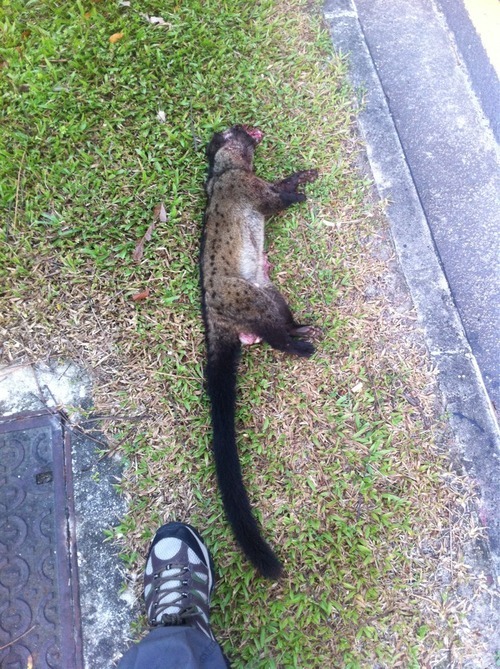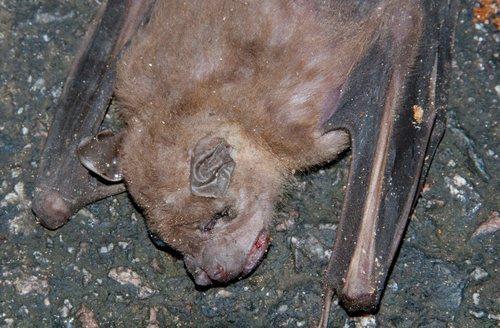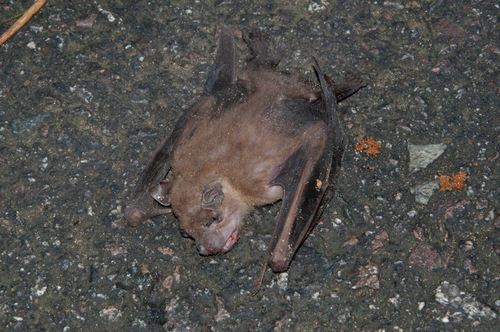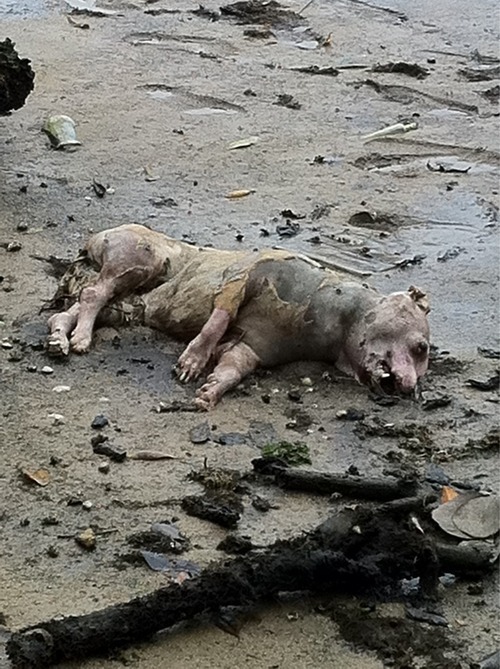
Common Palm Civet (Paradoxurus hermaphroditus)
Buona Vista, 3rd July 2012
This carcass of a Common Palm Civet was retrieved by N. Sivasothi on behalf of the Raffles Museum of Biodiversity Research (RMBR), and he shared a photo on Twitter. It’s likely that this was a roadkilled individual, as it was found on a busy road, and the head had been smashed in.
Find out how you can contribute to Monday Morgue as well.
- Life of a common palm civet in Singapore
- POSKOD: Creatures at Home
- The Digital Nature Archive of Singapore
- NParks Fauna&FloraWeb
- Wild Fact Sheets
- Wildlife Singapore
- Mammals (Phylum Chordata: Class Mammalia) of Singapore
- The diversity and status of the civets (Viverridae) of Singapore
- Ecology Asia
- Movements and fruit selection of two Paradoxurinae species in a dry evergreen forest in Southem Thailand
- Feeding ecology of the Common palm civet Paradoxurus hermaphroditus (Pallas) in semi-urban habitats in Trivandrum, India
- A short note on the activity patterns of Viverra tangalunga and Paradoxurus hermaphroditus in a secondary forest in Peninsular Malaysia
- Niche differentiation between Common Palm Civet
Paradoxurus hermaphroditus and Small Indian Civet Viverricula indica in regenerating degraded forest, Myanmar - An observation of Common Palm Civet Paradoxurus hermaphroditus mating
- Diet of the Common Palm Civet Paradoxurus hermaphroditus in a rural habitat in Kerala, India, and its possible role in seed dispersal
- An observation of several Common Palm Civets Paradoxurus hermaphroditus at a fruiting tree of Endospermum diadenum in Tabin Wildlife Reserve, Sabah, Malaysia: comparing feeding patterns of frugivorous carnivorans
- ARKive
- IUCN Red List
- Animal Diversity Web





